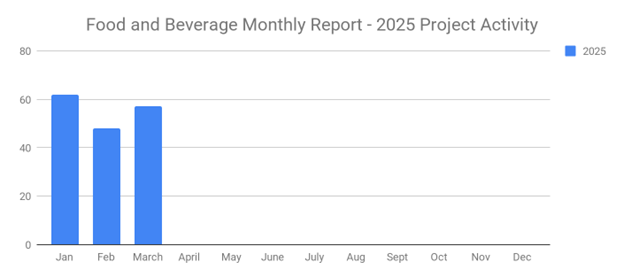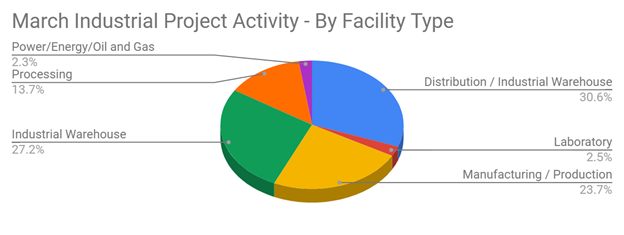
Reaching out to prospects at the right time is crucial for your B2B company's success. Timing plays a pivotal role in determining whether a prospect will choose your product or service or move on to a competitor. In industries like industrial sales, manufacturing, and business development, you may have only a brief window to make a compelling pitch. Failing to engage prospects during this critical window can result in lost sales opportunities, but by understanding and identifying buying signals, you can ensure you're contacting prospects when they're most likely to make a purchasing decision. Recognizing these signals helps you improve your lead generation efforts, increase customer acquisition, and enhance your overall sales strategy.
What Are Buying Signals?
Buying signals are cues or indicators that a prospect is nearing the decision-making phase of the purchasing process. These signals can be either explicit or implied, and recognizing them is essential for B2B lead generation. Explicit buying signals are straightforward; they occur when a prospect directly states their interest or intention to make a purchase. Implied buying signals, on the other hand, are more subtle and require careful attention. These could include prospects asking detailed questions about your products or services, comparing options, or discussing budget considerations.
Regardless of whether the signal is explicit or implied, it signifies that the prospect is in the market and actively considering a purchase. This is the moment when your sales development representatives (SDRs) must take action, ensuring your company’s solution is front and center.
Timing your communications with prospects is vital. B2B prospects often consist of business owners, Chief Executive Officers (CEOs), Chief Financial Officers (CFOs), and other decision-makers who face challenges such as operational inefficiencies, growth limitations, or unmet customer demands. These issues prompt the need for solutions, and by recognizing buying signals, your company can provide the right product or service at the right time.
In highly competitive environments like manufacturing and industrial sales, prospects seek solutions to complex problems. A company struggling to shorten its manufacturing cycles or improve customer satisfaction may look to vendors who can solve these issues. By positioning your B2B company's products or services as the solution to these problems, you can increase the likelihood of converting a lead into a customer.
However, timing is everything. Reaching out too early might lead to disinterest, as prospects may not yet recognize the urgency of their needs. Conversely, reaching out too late may mean they've already engaged with a competitor. Understanding and acting on buying signals allows you to navigate this delicate timing with precision.
How to Spot Buying Signals
Spotting buying signals requires a multi-faceted approach that combines data-driven insights with real-time interactions. Here are some of the most effective methods to identify these signals:
-
Sales Form Submissions
If your B2B company's website includes a sales form, monitor it closely for new inquiries. Prospects who are ready to make a purchase often take the first step by completing a form. Whether it's to request a demo, ask for pricing information, or inquire about product availability, these interactions are strong indicators of interest. Depending on how your sales form is configured, it may automatically notify your sales team, allowing them to follow up quickly. Prompt communication is key here—delayed responses can lose momentum and give competitors an edge. -
Keyword Tracking and Website Analytics
If your website includes a search function, consider implementing keyword tracking to monitor the terms prospects use. Keywords like "buy [product or service name]" or "pricing" show strong purchase intent. These are implied buying signals that suggest the prospect is comparing options or preparing to make a decision. By using advanced analytics tools to track user behavior, you can identify patterns that reveal a prospect’s journey through your website, helping your sales team determine when to reach out. -
Chatbot Interactions
Chatbots are becoming increasingly popular in B2B lead generation. These tools can identify buying signals in real-time conversations. Prospects often ask chatbots questions about specific features, pricing, or availability. When a chatbot recognizes a question that aligns with the purchasing process, it can immediately notify your sales team or even offer a direct connection to a sales representative. Automated interactions help ensure that no buying signal is overlooked. -
Firmographic-Based Signals
Firmographic data provides a deeper understanding of a prospect's business, including its size, location, industry, and revenue. Changes in firmographics—such as a company receiving new funding or experiencing executive leadership shifts—are often indicators that the company is poised to make significant investments. For instance, a business that just raised a new round of funding may now have the capital to invest in new technologies or services, making it an ideal target for B2B lead generation efforts. By monitoring these firmographic buying signals, your team can engage prospects when they are most likely to act. -
Google Alerts and Other Monitoring Tools
Google Alerts is a simple yet effective tool for tracking buying signals. By setting up alerts for mentions of a prospect's business, you can stay informed about events that may indicate a readiness to buy, such as expansions, relocations, or new product launches. These events often trigger the need for new solutions, allowing you to reach out with a timely and relevant offer. Google Alerts can help you spot buying signals. It's available by clicking here. If you know the name of a prospect's business, you can create an alert for it. Google will then monitor the internet for mentions of the prospect's business. Upon discovering a new mention, Google will send you an alert notification. Rather than looking for buying signals manually, you should take advantage of this free Google-powered tool.
Maximizing Buying Signals for B2B Sales Success
Identifying buying signals is just the first step. Acting on them swiftly and effectively is what leads to successful conversions. Here are some key tips to maximize the effectiveness of your sales strategy once you’ve identified these signals:
-
Immediate Response
The sooner you reach out to a prospect after identifying a buying signal, the better your chances of closing the deal. Delayed responses allow competitors to swoop in and secure the sale. Ensure your sales team has a streamlined process for responding to inquiries, whether through automated email follow-ups or real-time outreach by SDRs. -
Tailored Sales Pitches
Buying signals often provide additional information about the prospect’s needs or pain points. Use this information to customize your sales pitch. A personalized approach that addresses the specific challenges a prospect is facing will resonate far more than a generic presentation. For example, if a prospect has shown interest in reducing operational inefficiencies, tailor your pitch to highlight how your product or service can help them achieve that goal. -
Categorize and Prioritize Buying Signals
Not all buying signals are created equal. Some signals may indicate an immediate readiness to buy, while others suggest the prospect is still in the early stages of the decision-making process. Categorize signals as explicit, implied, firmographic-based, or event-based to prioritize your outreach efforts. This ensures your team focuses its attention on the most promising leads, streamlining your lead nurturing efforts. -
Use Buying Signals to Personalize Marketing
Personalization is a critical component of modern B2B sales strategies. Buying signals offer valuable insights into a prospect’s interests, allowing you to personalize your marketing and sales messages. Customized content, such as product demos, case studies, or tailored pricing options, can significantly increase engagement rates and push prospects closer to conversion.
Conclusion
Buying signals offer a powerful way to understand prospects’ intentions, providing valuable insights that allow you to time your outreach perfectly. Whether explicit, implied, or based on firmographic and event-driven data, these signals are a roadmap for successful B2B sales strategies. By acting on buying signals quickly, customizing your approach, and using data to guide your actions, you can increase your chances of closing deals and growing your B2B company's market share. Implementing an effective buying signal recognition process will enhance your customer acquisition, improve lead nurturing, and boost your overall success in industrial and manufacturing sales.
What to learn more? Get in Touch
Latest Posts
-

Expanding Your Footprint Using Industrial Business Development
-

183 New Distribution and Supply Chain Planned Industrial Projects in March with Space X Leading the Way
-

March 2025 Produced 57 New Food and Beverage Industry Planned Projects with Activity in Ohio, Pennsylvania and South Dakota
-

Planned Industrial Construction Projects Jumped 3% in March 2025

